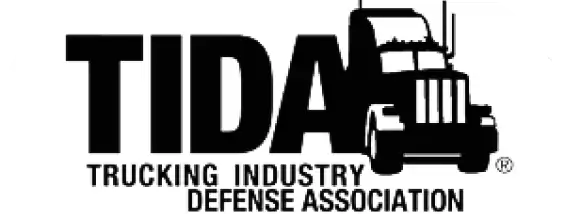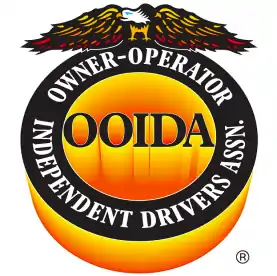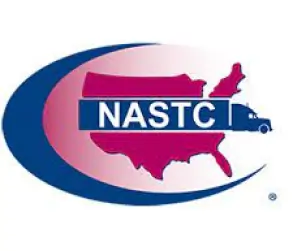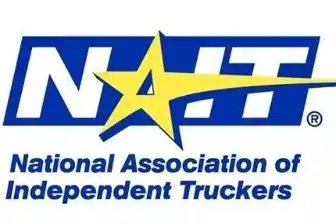
Login to Customer Portal
Enter your mobile number
Data Privacy & Security Guaranteed
Funding in 24 hours!

The trucking industry in the United States hauls the country’s economy by transporting huge quantities of materials (raw and finished ones) from manufacturing plants to retail distribution centers.
Trucking logistics enhance trucking operations and deliver service efficiency and business profitability by identifying the most efficient routes for the fleet, the optimum types of fuel for fleet, and enabling drivers to use better communication between themselves and their handlers.
With a market value of 791.7 billion U.S. dollars in 2019, trucking oversees a significant portion of freight movements in America.
The industry is a honeycomb to foreign direct investment which grew by $1.5 billion in 2018, not to mention the United States Business Logistics Costs jumped to $1.6 trillion in 2018.
According to the report, the United States freight and logistics market will witness a compound annual growth rate of ~3.2% between 2020-2025.
With the economic condition of America growing at an annual rate of 6.7 percent in the second quarter of 2021, the economic growth of the logistics industry is projected to pull upward, along with the fact that there has been a growth of container volumes of the ports in the United States in the first half of 2019.
The U.S. trucking industry, in 2006 employed 1.8 million drivers of heavy trucks. According to the statistics, the industry employed over 1.5 million people in 2018.
This report of the U.S. Bureau Of labor Statistics gives a detailed understanding of the status of employment in transportation and warehousing.
The long-haul trucking industry in America is expected to have very few available new hires, as a large percentage of truck drivers are aging and are about to retire. Back in 2005, the sector (long-haul trucking industry), the number of truck drivers fell short of 20,000 and increased to 38,000 by 2014.
As a matter of fact, the long-haul trucking industry has earned notoriety for higher employee turnover rates, meaning for every 100 new employees hired, 136 quit their jobs.
The trucking industry in the United States is competitive because of numerous operators in the market, including some of the privately held carriers and companies outside the industry, like air-transporters.
Under such a competitive environment, when customers have numerous alternative shippers, the trucking companies are leaving no stone unturned in cultivating ties with customers by serving them with excellent service to generate repeat business.
The fleet is in dire need of upgrades to keep maintenance costs in control, considering older vehicles depend on more maintenance.
Moreover, the U.S. environmental standards command trucking companies to ensure that their vehicles are in good working condition and more efficient. Companies have to follow appropriate fleet sizes based on the prevailing economic situation of the country.
For example, when the economic situation is in a downward spiral, truckers cut short on the number of vehicles in operations to avoid exceeding the holding capacity.
Seasonal factors affect the trucking and logistics industry, like the demand of their fleet increasing in the calendar fourth quarter, when retailers update their inventory stock for the major holiday shopping season.
LTL (less than load) freight companies experience higher demand in the middle of the year than truckload operators, considering the transportation of homogenous goods is less compared to a full truckload.
Both truckload and LTL players experience a slowdown in their business during the first quarter of the year because of weather-related disruptions during this period.
The trucking and logistics industry is best suited to the nimble investors who can discern ups and falls of the market.
One of the challenges the trucking industry faces is a shortage of qualified drivers, as the Covid-19 pandemic has worsened the condition of recruitment and retention of truck drivers.
It appears the pandemic’s influences will equate to an ongoing shortage of truck drivers throughout upcoming years.
In addition, the pandemic has also pushed major carriers away from some of their core customers, due to the changes in ROI demands and the price. These types of changes carry a strong butterfly effect upsetting the already brittle supply chains in the country.

The good thing about the American transportation system is that it is notably adaptable. Regardless of the situation, the industry has never slowed down its freight when it needed to be moved. However, within the past seven years, the market pricing has been thrown in disarray, as ports and rail train speeds run slow, resulting in a compromised system. Moreover, importers and intermodal shippers also turn their attention to the truck.
According to a Bloomberg report, the pandemic-induced crisis has forced the trucking industry to bring in drivers from abroad.
Moreover, the financial strain caused by prolonged restrictions due to lockdown measures in the aftermath of the pandemic has forced some companies to temporarily furlough employees or cut short labor in line with revenue losses. On the other hand, the pandemic has also increased the reliability of qualified drivers, as companies tend to retain drivers .
Apart from driver shortage, the trucking industry is also marred with issues like safety, increasing insurance costs, truck parking, and driver retention.
The Trucking & Logistics industry in the United States consists of companies that move people, products, and other goods across the country to different locations.
Under the industry, there are some of the most specific subsectors, such as logistics services, air, and express delivery services, freight rail, maritime, and trucking which form an integral part of transportation and logistics.
According to the U.S. Bureau of Labor Statistics, there are more than 1.7 million heavy-duty and tractor-trailer truck driving jobs in the United States.
While a large number of American blue-collar jobs have been on a downswing after the pandemic, the truck driving jobs, on the other hand, grew confidently in numbers.
One of the reasons for this upswing is that the trucking industry is immune to automation and offshoring, meaning technological advancement can’t affect the trucking industry's employment any time soon.
Just as robots are yet to learn how to drive and park a rig, interstate truck driving can’t be outsourced to China and other countries. This fact underlines the colossal value of the trucking industry based on its robust influence in terms of contributing to the country’s six percent of entire workforce strength.
The trucking industry in the United States is a powerful force today that directly influences the political and economic geography of the nation. Throughout the years the industry has been a necessity that is needed in nearly every tangible market.
It has gone through years of evolution before finally becoming the nation’s one of the most dominant sectors that hauled nearly 72.5% of all freight equating to 11.84 billion tons in 2019, making it a $791.7 billion industry representing 80.4% of America’s freight bill.
Back in the era when automobiles were not invented, most freight was handled by train or horse-drawn vehicles. Before the 19th century, trains were used to transport most of the freight overland.
Though the locomotives were highly efficient in transporting large amounts of freight, there was a problem of broad reachability, as the trains could only transport the freight to centralized urban centers for distribution carried out by a means of horse-drawn transport.
Ten years later from the time when Winton Motor Carriage Company built one of the first trailer trucks for moving cars from its factory, Fruehauf Trailer Corporation came up with semi-trailer trucks which mostly served short-haul urban routes.
At the beginning of 1910, technological advancement brought forth the contemporary trucking industry with emerging gasoline-powered internal combustion engines and the development of the tractor/semi-trailer combination, including the improvement of transmission and a shift in preference from chain drivers to gear drivers.
These novelties helped shipping by truck gain popularity. By the end of 1914, more than 100,000 trucks were hitting the roads in the U.S. However, the use of trucks was limited to mostly urban areas, considering the poor condition of the rural roads, tires of the trucks, and a max speed of just 24 km/h.
The use and development of trucks rose dramatically during World War 1 (1914-1918) as an efficient alternative to the congested railroads of the busy war years. During the years, Roy Chapin experimented with long-distance truck shipments. After the development of pneumatic tires supporting heavier loads, trucks were able to drive at higher speeds. White, and Mack, were two of the truck manufacturers that emerged during the busy war years.
By 1920, more than a million trucks are hitting American roads.
The trucking industry started to witness a visible growth when the condition of rural roads improved, and diesel engines (nearly 40% more efficient than gasoline engines) started to become a norm, along with modernizing truck and trailer sizes and improvement in fifth wheel coupling systems. All States in the country had their respective truck weight limitation laws in effect.
The trucking industry held its foothold during the 1950s and 1960s when it witnessed rapid infrastructural development of the Interstate Highway System and a broad network of freeways that provided seamless connectivity to prime cities across the continent.
The industry went through several enforcements of presidential and agency-based laws and regulations. By 2006, over 26 million trucks were driving on American roads transporting over 10 billion short tons (9.1 billion long tons) and projecting around 70% of the total volume of freight.
In the United States, all aspects of the trucking industry are regulated by two agencies, the U.S. Department of Transportation, and the Federal Motor Carrier Safety Administration (FMCSA).
There are different sets of rules for truck drivers concerning the number of daily and weekly driving hours, the roads and highways they may drive upon, and a legal definition of alcohol intoxication.

According to the Federal Highway Administration , the permissible level of driving under the influence of alcohol is 0.04 percent as the blood alcohol concentration (BAC) level for CMV (commercial motor vehicle) drivers, while BAC level for non-CMV drivers is set between 0.08 and 0.10 percent.
Rules and regulations regarding speed limits for truck drivers vary in different States.
The definition of CMV set by FMCSA is a single or combination of vehicle (truck and trailer) weighing 10,001 pounds or more and is qualified to transport hazardous materials marked under the hazardous materials regulations.
The law enforcement authority has also set forth rules for length, width, and weight limits for CMV vehicles for interstate commercial traffic. In this context, a truck driver is someone employed to operate a CMV.
The truck drivers in the country usually spend 10-14 hours per day in driving, while long-haul drivers spend weeks away from home.
The condition of truck drivers in the industry is dangerous, say they are five times more likely to die on the job than the average workers.
The truck drivers are often exposed to risk-prone lifestyles due to unhygienic eating, lack of exercise, and injuries sustained at work.
The Covid-19 pandemic has resulted in devastating impacts on virtually all the industry sectors operating in the United States. It has scrambled customer demand and portrayed a complicated picture of the growth of the industry in the country.
This coronavirus pandemic has pressured trucking and logistics companies to keep their core transportation system functional with a skeleton workforce. Another impact of the pandemic is a sudden shortfall in sources of revenue or the finances of various transport operators in the country.
One of the worst impacts of the pandemic on the trucking industry is the terrible shortage of truck drivers, and if the report is to be believed, the shortage of truck drivers will further deepen by 2026.
There has been a chronic lack of truck drivers in the country over the last many years, but the pandemic has catapulted the situation of driver shortage to a crisis level, which consequently has scaled up the demand for shipped goods, among many unpleasant upshots due to shortage of truckers across the country, according to the Bloomberg report.
Once the pandemic-induced lockdown measures are lifted, the trucking industry will have to plan for the future, ensuring that all the transportation network is ready for a return to normal operations.
The pandemic has also presented a bleak scenario to the truckers who fear being stranded across state lines, as they face plummeting pay, and are at higher risk of exposure to the viral disease.
A precarious scenario such as this has understandably made the survival of truck drivers in the U.S. difficult, given the current circumstances of the trucking industry under pandemics.
To manage survival in the Covid-19 crisis, the trucking and logistics industry players must plan some key steps, including determining cost and revenue implications of low ridership, building a large pool of qualified workers, and creating contingency plans for how to resume transportation service and handle the surge in demand.
Class 8 trucks are responsible for transporting 70% of all American freight.
Advancement in technology has benefited several industries in the United States, including the trucking industry from its corporate offices to the very truck itself.
As the American Journal of Transportation analyzes, the trucking industry is adopting technological trends to become effective and efficient operators.
From cloud computing and blockchain technology to self-driving trucks and digital payment, trucking companies are adopting cutting-edge technological trends to streamline their business operations.
For example, data sharing technology is helping trucking sectors to keep track of driver and vehicle progress remotely, along with other behaviors, like mileage and distance routes.
The technology is helping the industry with traffic coordination in which communicating and accessing fleet information remotely allows companies and drivers to improve the delivery times.
Lastly, online technology has disrupted the trucking job market with real-time job boards for drivers to apply for open roles seamlessly.
Some of the most famous trucking companies in the United States are considering newer locations for conducting production operations and fulfilling the ongoing demand for trucks in the country.
Texas, Illinois, and Ohio are preferred locations for Dry Vans, while California and Illinois are the best choices for Reefers.
Texas and Pennsylvania are the production locations for flatbed vehicles . These locations will rule the roost through 2022.

The trend to shift to a new production location is not a new phenomenon for the trucking industry. It is something that the entire transportation and freight industry has been following.
The Bureau of Labor Statistics has reported that the trucking industry has lost 6% of its pre-pandemic labor force of 1.52 million workers.
Most large and small trucking companies have suspended their business, given the unbearable market conditions within the industry, rendering at least 3000 truckers unemployed, causing a growing number of unemployed people in the country.
The report by the American Trucking Associations indicates a hiring and retention crisis in the trucking industry.
One of the issues attributed to the problem of job loss of truck drivers is the median income of $47,130 per year that is underwhelming, considering the amount of time they are on the clock and the enormity of stress in the job.
There is also a dilemma of hiring younger interstate drivers, due to the risk factors of inexperience that can lead to more accident prone possibilities.
Even though the market situation for the trucking and logistics industry is less than enthusiastic, the industry experts are optimistic for the revival of the industry in 2022.
Experts believe that the industry will turn around and witness gradual growth as a result of new developments upcoming.
Experts are hopeful about a market flip to emerge in 2022 for the trucking industry. One reason attributed to such hopefulness is the increasing influence of the e-commerce industry over the past few years.
Since truckers are an indispensable part of the e-commerce industry for safe transportation of their goods from one place to another, the boom in the industry will lead to growth within the trucking industry in 2022.
The expected growth in the industry will also influence the pricing model for truckers, which is incredibly low at present.
A trucking franchise can be a good first start option for a new entrepreneur /trucking company to allow a more successful entrance to the market. .
Since the trucking industry is a larger type of business, it requires larger resources, knowledge, and support. As a result, a franchise can open a gateway to a lucrative trucking business opportunity.
The American Trucking Association reports that freight transportation is an industry value worth around $600 billion a year.
The fastest-growing segment within this gigantic industry is the shipping and freight solutions and the management of supply chains and to help handle business efficiently without having the expense of the fleet of trucks and warehouses. This means leveraging on the franchise business model to start your own trucking business can be lucrative for you in the future.
American Trucking Associations (ATA) is the largest and most comprehensive trade association of 50 affiliated state associations in the United States. It is an 86-year old federation representing sectors, including LTL, truckload, agriculture, livestock, auto haulers, and large motor carriers to small mom-and-pop operations. ATA is the voice of the nation’s trucking industry serving with the mission to advocate and communicate efforts intended to make safety and profitability for its customers better.

Trucking industry defense association (TIDA) is a non-profit association. Founded in 1993, its members contribute knowledge and resources to the defense of the trucking industry. The association is a favorite for more than 1600 motor carriers, defense attorneys, trucking insurers, and claims serving companies. The association is responsible for downsizing the cost of claims and lawsuits against the trucking industry. Members of this association represent the industry’s interests and share their knowledge in defending the trucking industry in needs, such as property damage, personal injury, cargo claims, and worker’s compensation.

Owner-operator independent drivers association (OOIDA) was founded in 1973 as the international trade association. It represents the interests of professional truckers and independent owner-operators on the issues that affect them. With more than 150,000 members in all 50 states and Canada, the association is the strong voice for more than 240,000 individual heavy-duty trucks and small truck fleets, representing their interests in more powerful ways.

National association of small trucking companies (NASTC) came into existence in 1989 and it represents more than 10,000-member trucking companies by helping them control costs through managed purchasing, consultation, and advocacy. The mission of the association is to help member companies thrive in the competitive industry with a substantial amount of bottom-line dollars.

National association of independent truckers (NAIT) came into existence in 1981 to represent the interests of independent contractor small-business owners in the trucking industry. Since its inception, the association has cultivated long-term partnerships with providers dedicated to the industry. The association helps its members to stay up-to-date on the latest industry and association developments, along with its programs and services meant for members.

Women in trucking association (WIT) came into existence in 1981 to represent the interests of independent contractor small-business owners in the trucking industry. Since its inception, the association has cultivated long-term partnerships with providers dedicated to the industry. The association helps its members to stay up-to-date on the latest industry and association developments, along with its programs and services meant for members.

James E. Casey was born on March 29, 1888, in Pick Handle Gulch near Candelaria, Nevada. He was the founder of today’s one of the most respected and recognized companies, United Parcel Service (formerly the American Messenger Company) – a multinational shipping & receiving and supply chain management company headquartered in Sandy Springs, Georgia, U.S.
James and his friend Claude Ryan built the American Messenger Company in 1907, with just two bicycles and $100 in capital, in a six-foot by seven-foot basement office below a Seattle saloon. During the initial humble beginnings, they hired six boys responsible for delivering telegrams and other messages all over Seattle, on foot, bicycle, or motorcycle.
Their company was facing tough competition from nine competing messenger services that were already there in booming Seattle. However, Casey and his team kept their relentless pursuit of business success.

Later, the American Messenger Company merged with Evert McCabe's Motorcycle Messengers in 1913 and was renamed Merchants Parcel Delivery. Soon the services of the company expanded beyond Seattle, and it was rebranded as the United Parcel Service (UPS).
The trademark brown delivery vehicles of the UPS became so popular that it stood for security, trustworthiness, and efficiency in service delivery. The motto “best service and lowest rates” was the hallmark business message of the company.
Casey was a vehement supporter of employee enhancement programs, becoming the first businessman in America who had launched a profit-sharing plan dedicated to employees. Casey sought ways to support those people who didn’t have a family life and so, he created Casey Family Programs in 1966 for the children, providing stability and an opportunity for growth to responsible adulthood.
Casey passed away on June 06, 1983, leaving behind three legacies - UPS, the Annie E. Casey Foundation, and Casey Family Programs. He is a member of the U.S. Department of Labor Hall of Fame (since 2002).
Considering more than 70% of all domestic freight tonnage is hauled by trucks, the trucking industry can be a difficult business to break into. Moreover, there are certain challenges in the industry, such as tight profit margins, and 80% market saturation is caused by small trucking businesses.
Besides, there is a narrowed survival rate in the industry, say only 15% of new trucking companies manage to keep their businesses alive into their second year in business.
If these stats discourage you from starting a new trucking business, just remember that financing a trucking business is a surefire way to crush over these pesky speed bumps.
There are different types of truck finance options available for you in the market that you can choose to put your trucking & logistics business in the fast lane, or options to start a new business that may cost you in the ballpark of between $10,000 and $20,000.
The trucking business loan comes handy to bankroll all types of expenses for your small trucking businesses. A positive option is having lenders in the market who won’t subject your loan candidacy to a stringent review of your credit score. You will get the required working capital easily to run a successful commercial trucking business.
Since many financing options are available in the market, choosing the one best suited to your business need is often a cumbersome exercise. The job of finding a business loan becomes harder for the borrower with a poor credit score.
Traditional lenders often shy away from such lenders and also hesitate considering the loan candidacy of newly established companies, or applicants whose credit score is below the review criteria, according to their terms and conditions.
Under such circumstances, your loan application for trucking business finance may not be considered, or if approved, you will receive the funds after several weeks and then be required to pay off that finance for years.
Therefore, the first rule of thumb is understanding the fine prints of the application requirements and being armed with proper documentation.
Consider a lender that is willing to help guide you through a simple application process and ensure that the decision to secure a loan is done faster. Choose a lender that doesn’t reject a borrower’s loan candidacy based on poor credit scores or the unhealthy financial condition of a business or any factor that may pronounce rejection of your loan candidacy.
The most important thing to understand is the purpose for which you wish to take a loan and whether that financing fits into your business plan and future goals. Trucking business financing should be time-bound and manageable, not long-term debt.
The mission of Small Business Administration (SBA) Loans is to assist small business companies and entrepreneurs across the U.S. and address their business concerns, along with boosting the overall economy of the country.
It offers several loan programs for trucking companies under flexible rates and terms.
Since SBA loans are government-backed, trucking business companies can opt for one of the suitable loan options provided by the agency to purchase equipment, expand the business and use the loan as working capital to meet other business needs.
The amount of SBA loans to receive depends on varying factors defined under its terms & rates.
Equipment financing is a viable financial solution to purchase expensive equipment for the trucking business. Whether you want to purchase a new or used truck or different types of long-lasting physical assets necessary for your business, this financing option can solve your needs.
It allows you to break down the cost of expensive equipment into a supportable payment option that you can manage.
It involves a set number of scheduled payments made to the lender to offset the expensive purchase or get working capital. Use the loan to buy a new piece of equipment, or for working capital.
Fund your business expenses or address unforeseeable emergencies, or buy equipment. The loan you get has a fixed credit limit, allowing you to make multiple draws as needed within the credit limit.
It offers a revolving line of credit to fund emergency-induced needs in your trucking business. Commitment to paying down credit cards each month will improve your credit score as well.
This loan type involves selling your unpaid invoice to your lender for a discount. The balance you receive is the rebated amount lent by your lender from the payment made by the customer.
Because of problems associated with loan acquisition for trucking business loans from the lenders with strict eligibility criteria, most borrowers turn to alternative lenders, someone with relatively more flexible funding criteria.
In regard to trucking business loans, Funderial has been an excellent resource for lending. Since 2010, this BBB Accredited Business remains a leader in the lending market assisting over $1 billion dollars in lending to small to midsize businesses providing them with flexible lending /repayment options specific to their needs.
For trucking businesses to run successfully, timely financial assistance is one of the most important things to manage cash flow, cover daily operational expenses, including but limited to equipment expenses, including new equipment upgrades, maintaining older equipment, expanding the business development marketing/advertising, refinancing existing debts, payroll, etc.
This is where loan companies like Funderial come into the picture, extending a broad variety of loan options for small and medium-sized businesses, at attractive terms through in-house financing models, as well as the offer of trusted lending partners across the United States.
To help you operate your business and maintain its sustainable growth, we have a host of unique financing options at affordable rates and easy terms, with instant approval timespan, and quick turn around funding.
We are fully aware of the dire financial need a business owner experiences. In critical times like pandemic-ravaged economy forcing small businesses to shut down their operations due to lack of funding, our well-timed funding assistance can help your business survive and thrive.